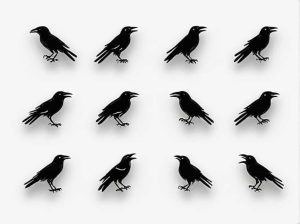The chaparral biome is a unique ecosystem found in coastal regions with hot dry summers and mild wet winters. It is home to a wide variety of animals that have adapted to extreme temperatures limited water sources and frequent wildfires.
This topic explores the most common animals of the chaparral including mammals birds reptiles amphibians and insects.
What is the Chaparral Biome?
The chaparral biome is characterized by dense shrubs rocky terrain and dry conditions. It is found in California the Mediterranean South Africa Australia and Chile. Despite its harsh climate the chaparral supports a diverse range of wildlife.
Key Features of the Chaparral
✔ Hot dry summers with little rainfall
✔ Mild wet winters
✔ Frequent wildfires
✔ Drought-resistant plants such as manzanita and sagebrush
Now let’s explore the fascinating animals that call the chaparral home.
Mammals of the Chaparral
Mammals in the chaparral adapt to heat and limited water sources by being nocturnal burrowing or having efficient water retention.
1. Coyotes (Canis latrans)
✔ Omnivorous diet: eats small mammals birds fruits and carrion.
✔ Highly adaptable to different environments including cities.
✔ Nocturnal and crepuscular avoiding extreme heat.
2. Bobcats (Lynx rufus)
✔ Stealthy predator of rabbits rodents and birds.
✔ Solitary and territorial marking areas with scent.
✔ Thick fur and spotted coat help with camouflage.
3. Mule Deer (Odocoileus hemionus)
✔ Browses on shrubs leaves and grasses.
✔ Large ears help detect predators like mountain lions and coyotes.
✔ Migrates seasonally in search of food and water.
4. Gray Fox (Urocyon cinereoargenteus)
✔ One of the few fox species that can climb trees.
✔ Eats rodents birds insects and fruits.
✔ Blends into the rocky terrain to avoid predators.
Birds of the Chaparral
Many birds in the chaparral have adaptations for dry conditions such as water-efficient diets sharp beaks and ground nesting habits.
5. California Quail (Callipepla californica)
✔ State bird of California.
✔ Feeds on seeds leaves and insects.
✔ Travels in coveys (small groups) for protection.
6. Roadrunner (Geococcyx californianus)
✔ Famous for its fast-running speed (up to 20 mph).
✔ Eats lizards snakes insects and small birds.
✔ Can kill rattlesnakes using quick strikes.
7. Red-tailed Hawk (Buteo jamaicensis)
✔ Large bird of prey that hunts rodents rabbits and reptiles.
✔ Excellent vision spotting prey from high above.
✔ Often seen soaring over chaparral landscapes.
8. Western Scrub-Jay (Aphelocoma californica)
✔ Intelligent and vocal bird.
✔ Stores acorns in the ground for winter food.
✔ Helps disperse seeds aiding in plant growth.
Reptiles and Amphibians of the Chaparral
The hot rocky terrain of the chaparral is home to many reptiles and amphibians that thrive in dry environments.
9. Western Rattlesnake (Crotalus oreganus)
✔ Venomous snake with a distinct rattle to warn predators.
✔ Ambush predator feeding on rodents and birds.
✔ Can sense heat to detect warm-blooded prey.
10. Desert Tortoise (Gopherus agassizii)
✔ Herbivore feeding on dry grasses and cacti.
✔ Stores water in its bladder for drought survival.
✔ Can live over 50 years in the wild.
11. Fence Lizard (Sceloporus occidentalis)
✔ Also known as the “blue-belly lizard.”
✔ Regulates body temperature by basking in the sun.
✔ Eats insects and spiders.
12. California Newt (Taricha torosa)
✔ Amphibian found near chaparral streams and ponds.
✔ Secretes a toxic substance for protection.
✔ Migrates to water sources during breeding season.
Insects and Arachnids of the Chaparral
Insects and arachnids play a vital role in the chaparral ecosystem as pollinators decomposers and prey for other animals.
13. Tarantulas (Aphonopelma spp.)
✔ Large hairy spiders that hunt insects at night.
✔ Burrow in the ground to escape heat.
✔ Non-venomous to humans but can flick irritating hairs.
14. Monarch Butterflies (Danaus plexippus)
✔ Famous for their long migrations.
✔ Feed on milkweed which makes them toxic to predators.
✔ Bright orange and black wings serve as a warning.
15. Carpenter Bees (Xylocopa spp.)
✔ Large solitary bees that help pollinate chaparral plants.
✔ Drill holes in wood to create nests.
✔ Play an essential role in ecosystem balance.
Adaptations of Chaparral Animals
Chaparral animals have evolved unique adaptations to survive in this extreme environment.
✔ Nocturnal behavior – Many animals are active at night to avoid heat.
✔ Water conservation – Mammals and reptiles store water or get moisture from food.
✔ Camouflage – Many animals blend into dry rocky landscapes to avoid predators.
✔ Burrowing – Some species like foxes and tarantulas dig burrows to escape heat.
Threats to Chaparral Wildlife
Despite its resilience chaparral wildlife faces many threats including:
✔ Wildfires – Natural fires help regenerate plants but human-caused fires are too frequent and harmful.
✔ Habitat destruction – Urban expansion and agriculture reduce animal habitats.
✔ Climate change – Rising temperatures increase drought stress for plants and animals.
✔ Poaching and illegal hunting – Some species like rattlesnakes and deer are hunted excessively.
Conservation Efforts for Chaparral Animals
To protect chaparral ecosystems and wildlife conservation groups are working on:
✔ Habitat preservation – Establishing protected areas to prevent deforestation.
✔ Wildfire management – Implementing controlled burns to maintain balance.
✔ Wildlife corridors – Creating safe passageways for migrating animals.
✔ Public education – Raising awareness about the importance of the chaparral biome.
The chaparral biome is home to an incredible variety of mammals birds reptiles amphibians and insects that have adapted to survive in extreme conditions. From the stealthy bobcat to the fast-running roadrunner each species plays a role in maintaining the delicate balance of this unique ecosystem.
Understanding and protecting chaparral wildlife is essential to ensuring these amazing animals continue to thrive for generations to come.



